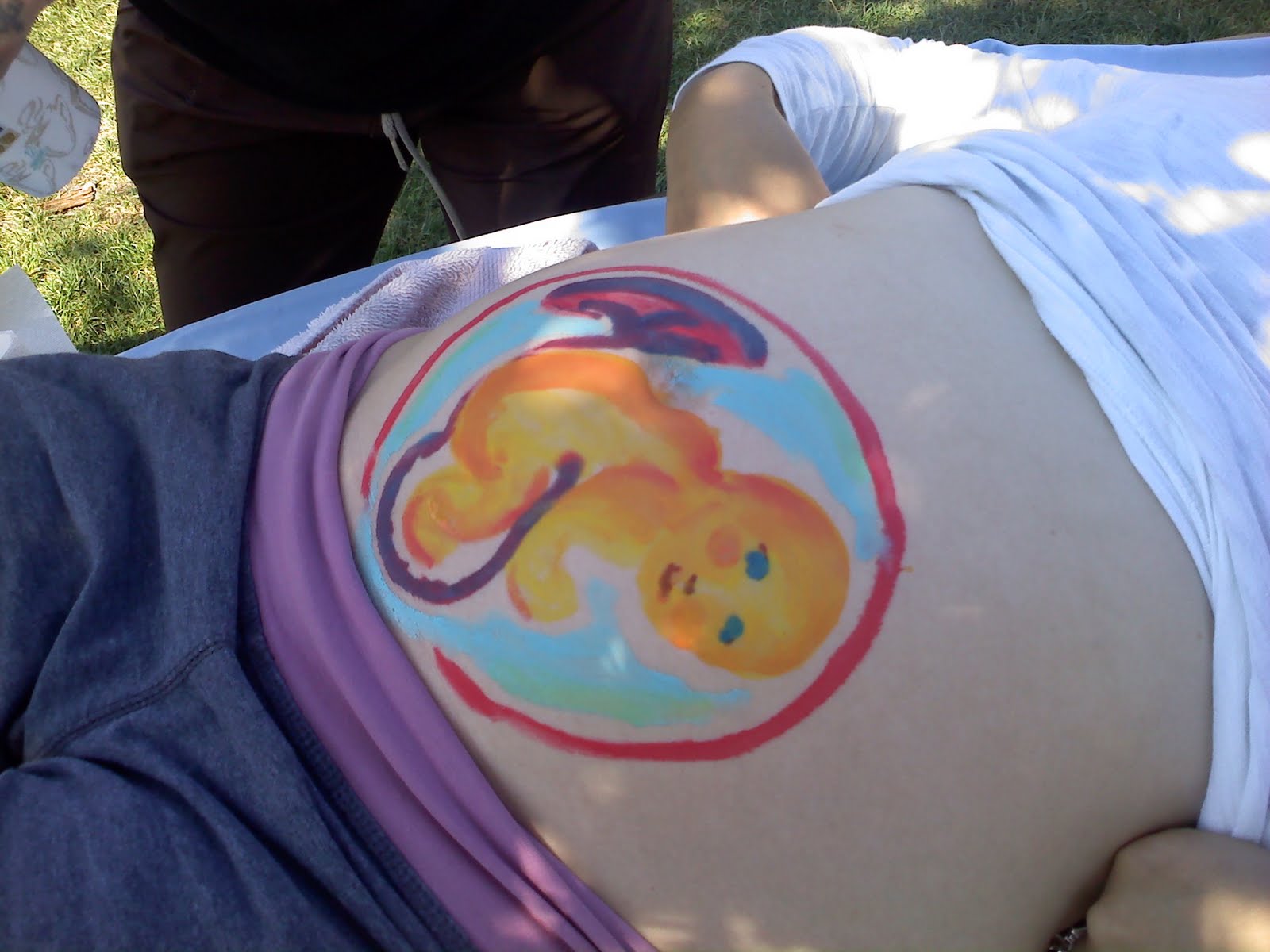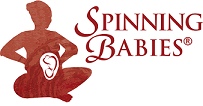Hi Gail,
I’m 35 weeks pregnant (actually 34.5), second baby… First baby was born at home, this one will be in a hospital for practical reasons. Baby girl #2 is still changing positions and moving a ton, but she seems to be in an oblique position quite a bit. At my last midwife appt, she was oblique with head in my right hip, back diagonal, butt up near belly button height on left side, and feet up high near/under my ribs on the right. Sometimes I feel feet more belly button height. Sometimes she flips and her head seems down to the left hip, and her torso mostly on my right side. I can’t quite tell exactly what I’m feeling and where the head is and I don’t have a Doppler to find heart/chest so my Belly Mapping is not certain by any means.
 |
| This painting is opposite to the mother on this blog’s description but is oblique. |
She’s in a different position at every recent midwife appointment when they check her and listen for heart tones. [Such changes are indicative of an unstable fetal lie.]
My first baby was a brow presentation, long labor, but she came out vaginally finally and never turned (she was face/brow first and OP). My midwife and doula said I had a great pelvis for birthing. The chances of a malposition, or the same malposition, this time I am told are extremely low. So, maybe I’m just being paranoid. But, your website seems pretty adamant that transverse or oblique lie after 30-32 weeks is a problem. The midwives I see and my doula keep telling me it’s too soon to worry and baby is still moving and changing positions. But, I’ve been told not to do inversions (not really sure why)….
My Reply:
Every birth and baby are unique but certain situations do tend to follow one another. I have no hard data on what I am about to say. You may accept it or not, or even use what you like. You are welcome to share this with your midwives; I encourage it.
Your description of your baby’s current fetal position and your previous history may indicate a possible pelvic floor issue of short or tight muscles on one side and/or a slight twist in the lower uterine segment. Your history is typical of these causes, occurred by moving in a gravity environment (Earth!) and having a sudden stop or jolt such as in sports. Its not so uncommon and can come from a variety of interactions with gravity.
The relevant techniques are:
- Forward leaning inversion as dehttps://www.spinningbabies.com/wp-content/uploads/2019/10/sample3-1.pngd on my site
- Sidelying release as dehttps://www.spinningbabies.com/wp-content/uploads/2019/10/sample3-1.pngd in detail
- Standing sacral release
- Abdominal release
- Then wearing a pregnancy belt to support baby’s vertical lie and reducing the oblique lie.
- Aligning the pelvis
- Releasing round ligaments with Webster Maneuver
Some of these are on my site, the last two are done by a chiropractor.
Your midwives might read my description of the forward leaning inversion and feel more confident.
Labor with an Oblique lie
Baby cannot be born in this diagonal position.
Lunges in labor may also help move the head down and avoid a cesarean.
Waiting in labor reduces chances of success and yet you have a reasonable chance of success with waiting. Asynclitism may be more likely making a vaginal birth a bit of work, if so, and not always possible, though, I agree, more so in your case than in some.
Without baby’s head in the pelvis there is a small but increased chance of cord prolapse. This can be reduced by attending to the soft tissues now. Baby’s accommodate the space in the womb they find, and are not random in settling in an oblique position at this gestational age.
Whether or not this is important in your personal situation is not 100% clear, this is just a trend. Where will you fit on the trend? You can move yourself to a more easier birth with body balancing sooner than later, in my opinion.
The rest is up to you.
Come visit the blog. Spinning Babies Blog. www.spinningbabies.com

